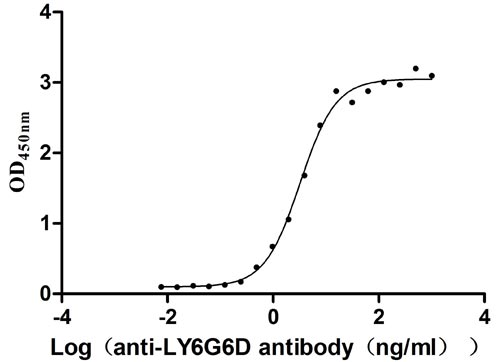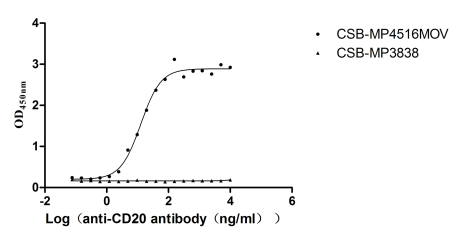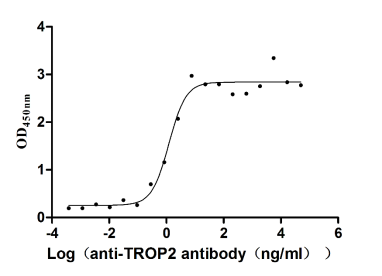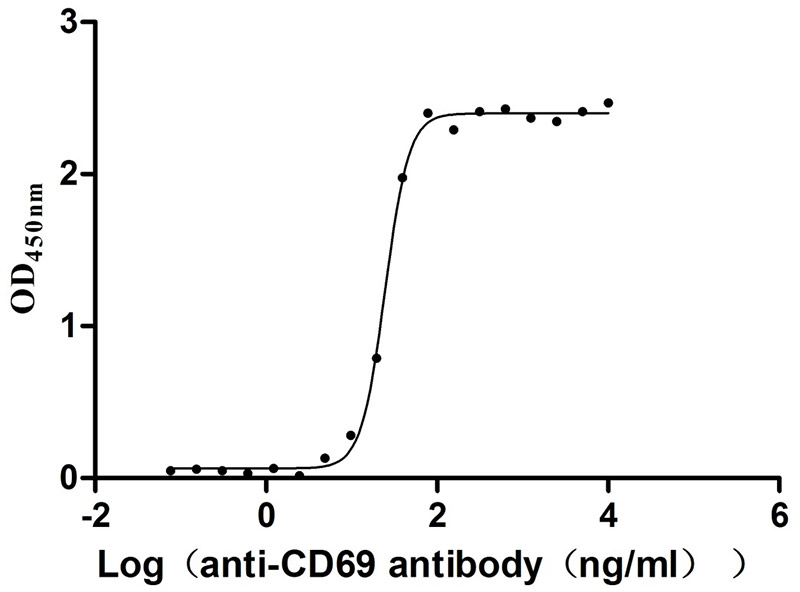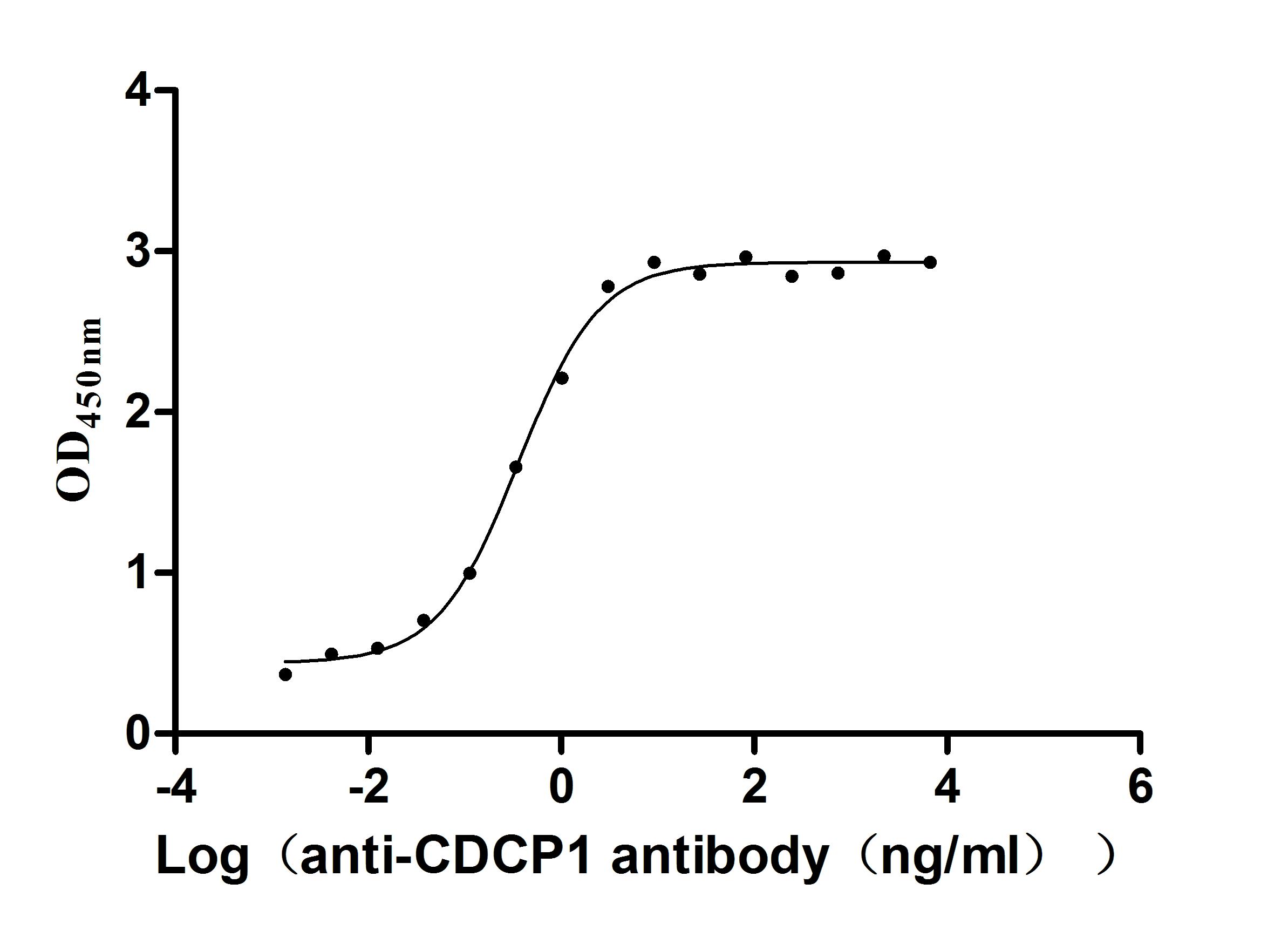Recombinant Human DnaJ homolog subfamily C member 5 (DNAJC5),Biotinylated
-
货号:CSB-EP863975HU-B
-
规格:
-
图片:
-
其他:
产品详情
-
纯度:Greater than 85% as determined by SDS-PAGE.
-
基因名:
-
Uniprot No.:
-
种属:Homo sapiens (Human)
-
蛋白长度:Full Length
-
来源:E.coli
-
分子量:69.9 kDa
-
表达区域:1-198aa
-
氨基酸序列MADQRQRSLSTSGESLYHVLGLDKNATSDDIKKSYRKLALKYHPDKNPDNPEAADKFKEINNAHAILTDATKRNIYDKYGSLGLYVAEQFGEENVNTYFVLSSWWAKALFVFCGLLTCCYCCCCLCCCFNCCCGKCKPKAPEGEETEFYVSPEDLEAQLQSDEREATDTPIVIQPASATETTQLTADSHPSYHTDGFN
Note: The complete sequence including tag sequence, target protein sequence and linker sequence could be provided upon request. -
蛋白标签:N-terminal MBP-tagged and C-terminal 6xHis-Avi-tagged
-
产品提供形式:Liquid or Lyophilized powder
Note: We will preferentially ship the format that we have in stock, however, if you have any special requirement for the format, please remark your requirement when placing the order, we will prepare according to your demand. -
缓冲液:If the delivery form is liquid, the default storage buffer is Tris/PBS-based buffer, 5%-50% glycerol. If the delivery form is lyophilized powder, the buffer before lyophilization is Tris/PBS-based buffer, 6% Trehalose, pH 8.0.
-
复溶:We recommend that this vial be briefly centrifuged prior to opening to bring the contents to the bottom. Please reconstitute protein in deionized sterile water to a concentration of 0.1-1.0 mg/mL.We recommend to add 5-50% of glycerol (final concentration) and aliquot for long-term storage at -20℃/-80℃. Our default final concentration of glycerol is 50%. Customers could use it as reference.
-
储存条件:Store at -20°C/-80°C upon receipt, aliquoting is necessary for mutiple use. Avoid repeated freeze-thaw cycles.
-
保质期:The shelf life is related to many factors, storage state, buffer ingredients, storage temperature and the stability of the protein itself.
Generally, the shelf life of liquid form is 6 months at -20°C/-80°C. The shelf life of lyophilized form is 12 months at -20°C/-80°C. -
货期:Delivery time may differ from different purchasing way or location, please kindly consult your local distributors for specific delivery time.
-
注意事项:Repeated freezing and thawing is not recommended. Store working aliquots at 4°C for up to one week.
-
Datasheet & COA:Please contact us to get it.
相关产品
靶点详情
-
功能:Acts as a general chaperone in regulated exocytosis. Acts as a co-chaperone for the SNARE protein SNAP-25. Involved in the calcium-mediated control of a late stage of exocytosis. May have an important role in presynaptic function. May be involved in calcium-dependent neurotransmitter release at nerve endings.
-
基因功能参考文献:
- Results indicate that by assisting local lysosome/proteasome processes, CSPalpha-mediated removal of toxic proteins via extracellular vesicles plays a central role in synaptic proteostasis. PMID: 28424476
- The importance of specific residues in the cysteine-string domain was investigated, revealing that a central core of palmitoylated cysteines is essential for aggregation of adult-onset neuronal ceroid lipofuscinosis CSPalpha L115R/L116 mutants. PMID: 28127059
- Phosphorylation of CSP triggers a major conformational switch that modulates its protein interactions. PMID: 27452402
- In fact, DnaJC5 overexpression induced tau release in cells, neurons, and brain tissue, but only when activity of the chaperone Hsc70 was intact and when tau was able to associate with this chaperone. PMID: 27261198
- This study demonstrated that Neuronal ceroid lipofuscinosis with DNAJC5/CSPalpha mutation has PPT1 pathology and exhibit aberrant protein palmitoylation. PMID: 26659577
- These results suggest that the degeneration seen in the patients with AD-ANCL reported here might be a consequence of both the early effects of CSPalpha mutations at the cellular soma. PMID: 26610600
- the presynaptic vesicle protein CSPalpha is a key player in synaptic degeneration and protection in Alzheimer's disease. PMID: 25631211
- Missense mutations in DNAJC5 does not play a major role in PD in the Chinese population. PMID: 24126164
- Results indicate of a p.L116del mutation in DNAJC5 from families with autosomal dominant Kufs disease. PMID: 22978711
- Palmitoylation-induced aggregation of mutant CSP-alpha proteins may underlie the development of adult-onset neuronal ceroid lipofuscinosis PMID: 22902780
- association of DNAJC5 mutations with autosomal dominant Kufs disease PMID: 22235333
- This is the first replication study of the identification of DNAJC5 as the disease-causing gene for autosomal dominant ANCL. The identification of the novel gene in ANCL will allow us to gain a better understanding of the pathological mechanism of ANCLs PMID: 22073189
- A neuroprotective role for CSPalpha in humans is confirmed. PMID: 21820099
- First evidence that CSP and HSP70, and their interactions with MARCKS, are involved in mucin secretion from airway epithelium. PMID: 18314541
- Csp not only regulates the exit of CFTR from the ER, but this action is accompanied by Hsc70/Hsp70 and CHIP-mediated CFTR degradation. PMID: 19098309
- Csp has a role in regulated CFTR trafficking at the plasma membrane. [CYSTEINE STRING PROTEIN] PMID: 12039948
- Cysteine string protein inhibits N-type calcium channels, but is blocked by mutant huntingtin PMID: 14570907
- CSP modulates G protein function by preferentially targeting the inactive GDP-bound form of G alpha(s) and promoting GDP/GTP exchange; the guanine nucleotide exchange activity of full-length CSP is regulated by Hsc70-SGT PMID: 15972823
- Cysteine string protein monitors late steps in cystic fibrosis transmembrane conductance regulator biogenesis PMID: 16469739
- palmitoylation of CSP is enhanced specifically by co-expression of the Golgi-localized palmitoyl transferases DHHC3, DHHC7, DHHC15, or DHHC17 PMID: 18596047
- Has a role in exocytosis of large dense core vesicles. PMID: 10194413
显示更多
收起更多
-
相关疾病:Ceroid lipofuscinosis, neuronal, 4B (CLN4B)
-
亚细胞定位:Cytoplasm, cytosol. Membrane; Lipid-anchor. Cytoplasmic vesicle, secretory vesicle, chromaffin granule membrane. Melanosome. Cell membrane.
-
组织特异性:Expressed in pancreas, kidney, skeletal muscle, liver, lung, placenta, brain and heart.
-
数据库链接:
Most popular with customers
-
Recombinant Human Tissue factor pathway inhibitor (TFPI), partial (Active)
Express system: Mammalian cell
Species: Homo sapiens (Human)
-
Recombinant Dog Angiopoietin-2 (ANGPT2) (Active)
Express system: Mammalian cell
Species: Canis lupus familiaris (Dog) (Canis familiaris)
-
Recombinant Mouse Claudin-18.2 (Cldn18.2)-VLPs (Active)
Express system: Mammalian cell
Species: Mus musculus (Mouse)
-
Recombinant Human Lymphocyte antigen 6 complex locus protein G6d (LY6G6D) (Active)
Express system: Yeast
Species: Homo sapiens (Human)
-
Recombinant Macaca fascicularis Membrane spanning 4-domains A1 (MS4A1)-VLPs (Active)
Express system: Mammalian cell
Species: Macaca fascicularis (Crab-eating macaque) (Cynomolgus monkey)
-
Recombinant Human Tumor-associated calcium signal transducer 2 (TACSTD2), partial (Active)
Express system: Mammalian cell
Species: Homo sapiens (Human)
-
Recombinant Human Early activation antigen CD69 (CD69), partial (Active)
Express system: Mammalian cell
Species: Homo sapiens (Human)
-
Recombinant Human CUB domain-containing protein 1 (CDCP1), partial (Active)
Express system: Mammalian cell
Species: Homo sapiens (Human)

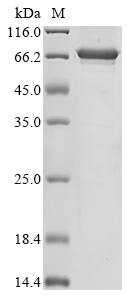

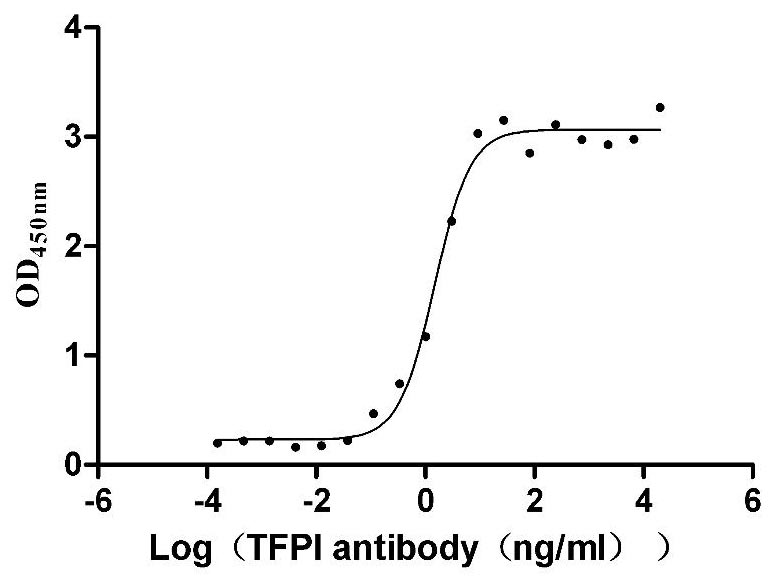
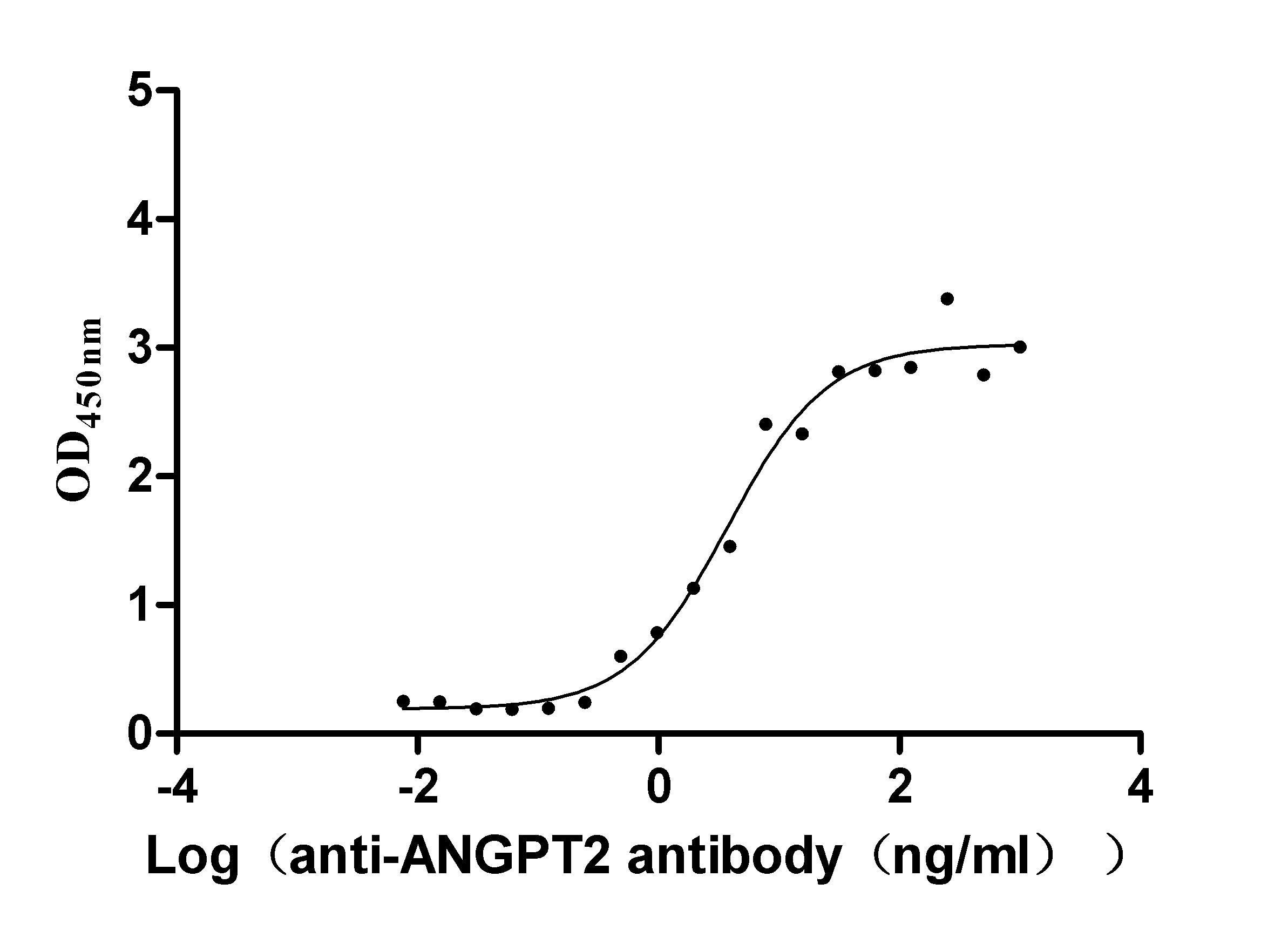
-AC1.jpg)
